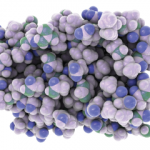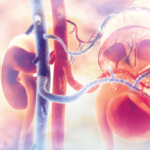At a Great Debate session, speakers discussed whether mixed connective tissue disease is a distinct disease entity in rheumatology.


At a Great Debate session, speakers discussed whether mixed connective tissue disease is a distinct disease entity in rheumatology.

Lucy Masto, BS, Medha Barbhaiya, MD, MPH, Caroline H. Siegel, MD, MS, Lisa R. Sammaritano, MD, & Michael D. Lockshin, MD |
Undifferentiated connective tissue disease (UCTD) is a diagnosis given to patients who do not fulfill current classification criteria for named connective tissue diseases (CTD)—systemic lupus erythematosus (SLE), rheumatoid arthritis (RA), systemic sclerosis (SSc), or Sjögren’s disease—but who nonetheless have clinical signs and symptoms and serological evidence of autoimmune CTDs. In 1980 LeRoy et al. were…

Due to its array of radiographic patterns, interstitial lung disease can be challenging to diagnose and treat. Adam Guttentag, MD, a cardiothoracic radiologist, shared tips for ordering and interpreting chest computed tomography.

Melissa Griffith, MD, discussed the diagnosis and treatment of interstitial lung disease (ILD) in patients with rheumatic diseases, including connective tissue disease and more.

ACR Convergence 2021—The past year has been an exciting time for researchers and clinicians focused on the topic of connective tissue disease-associated interstitial lung disease (CTD-ILD), with advances in our understanding of these disorders and newly approved medications for their treatment. At the ACR Convergence 2021 annual Review Course, Kristin Highland, MD, MSCR, director of…

People with autoimmune connective tissue diseases produce antibodies against nuclear antigens up to 10 years before they develop clinical features. Anti-nuclear antibodies (ANAs) are also very common, and a small percentage of ANA-positive patients progress to clinical autoimmunity. The question: Is there a reliable way to screen at-risk patients before they develop active autoimmunity and…

Joey Kim, MD, Navneet Kaur, MD, Phillip Zhang, MD, & Irene Blanco, MD, MS |
Calciphylaxis is a poorly understood and life-threatening ischemic vasculopathy characterized by calcification of the small- and medium-size arteries in the skin, subcutaneous tissue and internal organs, which leads to thrombosis, tissue necrosis and painful skin ulcerations that won’t heal. The disease has a 50–80% mortality rate. Although affected patients typically have end-stage renal disease (ESRD)…

In recent years, scientists and clinicians have learned a great deal about autoantibodies occurring in idiopathic inflammatory myopathies (IIMs). These new discoveries have reshaped our understanding of distinct clinical phenotypes in IIMs. Scientists continue to learn more about how these autoantibodies shape pathophysiology, diagnosis, disease monitoring, prognosis and optimum treatment. Moving forward, these autoantibodies will…
Links between autoimmunity, malignancy prompt rheumatologists to include cancer screening for patients
Research identifies specific mortality risk predictors among SSc-APAH patients